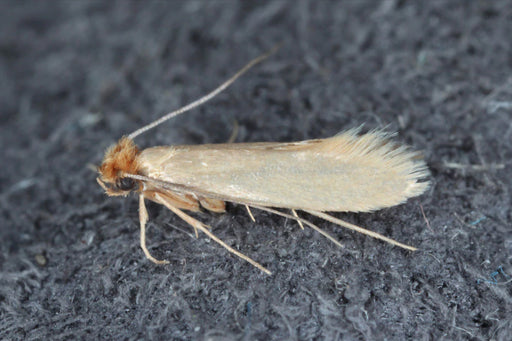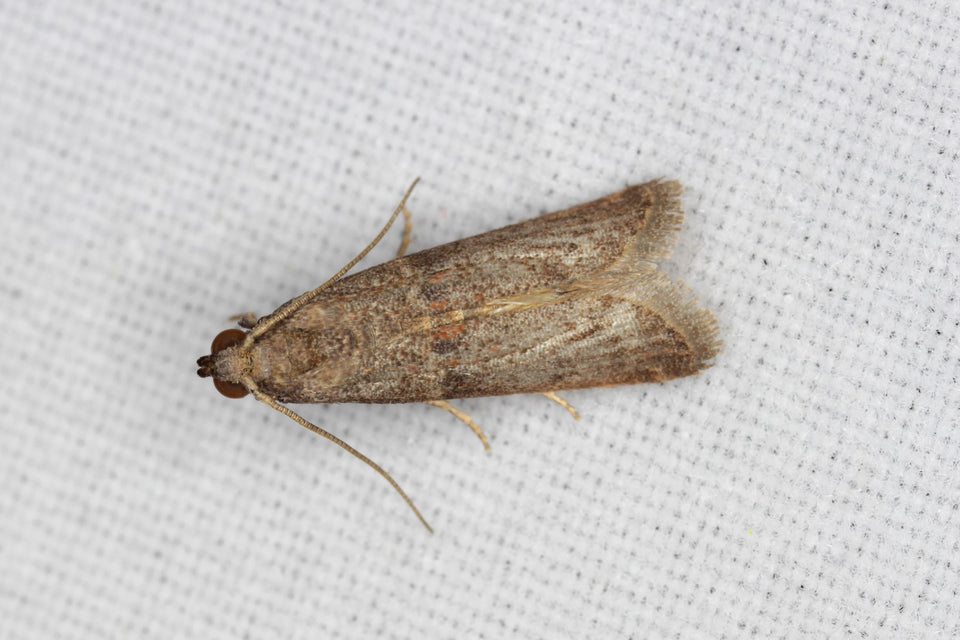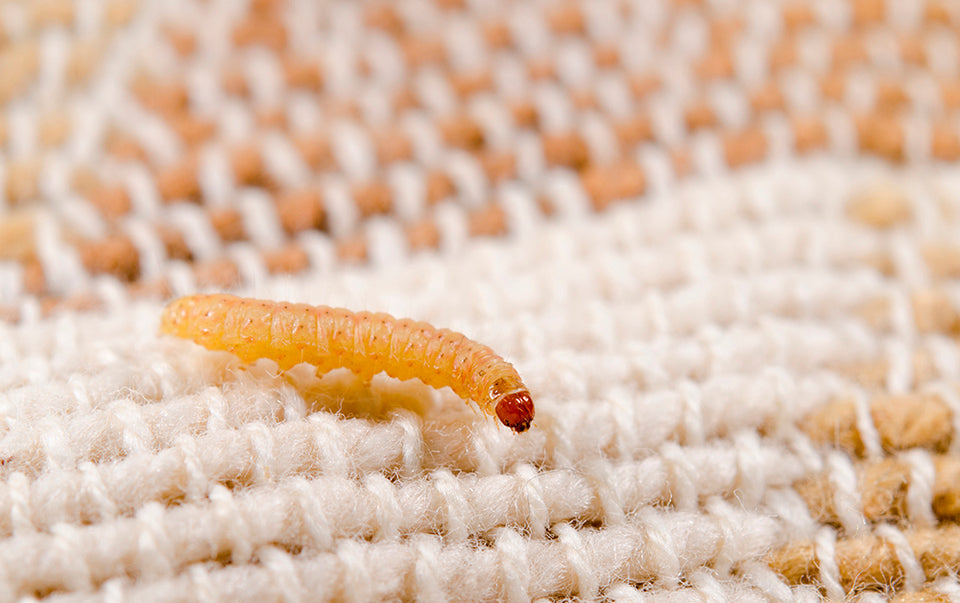What Are Moths? Facts and Control Tips

Ever wondered what species of insect a moth was? Or, maybe you are just curious as to why these flying annoyances are infiltrating your house. No matter what the reason for your interest in the subject is, these helpful facts about moths are great to have in your stockpile of knowledge! We’ve also added some moth control and prevention tips.
What kind of animal is a moth?
Exactly what are moths? Butterflies and moths are insects. They are both parts of the same insect group known as Lepidoptera. Lepidoptera means scaly-wing. This makes sense, as the dusty stuff on a moth's wings happens to be tiny scales.
What is the difference between a moth and a butterfly?
There are many species of moths. Some are big, some are small, and some are even brightly colored just like butterflies. The main difference between a moth and a butterfly is in the furry body, wide body size, and nocturnal habits.

What are Clothes Moths?
Clothes Moths are tiny, half-inch-sized moths that usually come in beige or buff-brown colors. These moths have narrow wings that are fringed with little hairs. They often are mistaken for Pantry or Grain Moths. Clothes Moth Larvae eat natural materials such as wool, leather, silk, cashmere, and similar fabrics. The Scientific Name for the Clothes Moth is Tineola bisselliella.
What are moths attracted to?
It all depends on the species of moth. Clothes Moths are attracted to dark, secluded areas with natural materials where they can lay their eggs and have a food source for their larvae. Pantry Moths like the same quiet places, but prefer dry good food sources for their larvae. Other, non-pest species of moths like flower nectar or rotting fruit.
How long do most moths live?
Again, this will depend on the species of moth. Moths usually live from 1 to 6 months. For example, the common brown house moth may live as long as four months. However, silkworms only live for about two weeks. Weather patterns, geographical regions, and temperatures may also impact the life cycle and lifespan of a moth.
What is the purpose of the moths in nature?
So what are moths good for? Well, moths and moth larvae are important food sources for many species. They are eaten by small mammals, amphibians, bats, and numerous species of birds. Some moths are also pollinators. The fuzzy hairs on their bodies are a great place for pollen to stick as they move from one flower to another.
Why do moths fly at lights?
There is a lot of debate surrounding why moths fly toward light. Moths prefer dark hiding places. Some scientists believe this is why they fly at light sources. You see, they get disorientated and attempt to hide in Mach bands behind the light.
What does seeing a moth mean?
If you see a common brown house moth, it probably means you need to close your windows better at night when the lights are on. However, if you see a Clothes Moth, you may want to take preventative measures to discourage a potential infestation. After all, you don’t want a Clothes Moth laying eggs in your house. These eggs can hatch into larvae that will happily chew through your favorite sweaters.

Clothes Moth Control Tips
- Use Cedar woods in your home. Cedar naturally repels moths.
- Consider purchasing or making your own moth deterrent sachets.
- Place Moth Traps around your home to catch any adult moths before they lay eggs.
- Keep your house as clean as possible and dust, mop, or vacuum frequently.
- Store your clothing in sealed containers and consider throwing in mothballs or moth deterrent sachets.
- Wash your clothes before storing them.
- Avoid bringing used furniture, fabrics, or clothing into your home until it has been cleaned.
- You can freeze fabric items for 72 hours to kill any hidden moth eggs.
Other Interesting Moths Facts
- There are over 11,000 different species of moths in the United States.
- Clothes Moth Larvae are responsible for most kinds of pest damage, especially to clothes, garments, and upholstery.
- Many adult moth species don't eat. Only the larvae do.
- Moth life cycle time spans may vary based on the temperature or local seasonal changes.
- Moths are an important food source for many animals.
FAQs for What Are Moths?
Learning new facts about moths is a great way to enhance your understanding of these fascinating insects. Moreover, some moth facts can be very helpful in preventing moth infestations. This is especially true if you’re trying to keep pest species like Pantry Moths and Clothes Moths out of your home. Since there are some questions about moths that are asked more frequently than others, we’ve provided this handy FAQ guide! Below, you will find some of the most common questions concerning moths, their behaviors, and what they are generally up to.
Question: What are moths attracted to?
Answer: Moths may be attracted to a range of things. It will all depend on what species of moth you are asking about. Large moths like the long-tongued Sphinx Moth love nectar. They drink from fruits and flowers just like hummingbirds! Therefore, these moths are attracted to flowers, fruit trees, and greenery.
On the other hand, some moths are attracted to light. These moths tend to fly toward bright lights at night, for reasons that are still baffling to scientists. Then, there are the moths that prefer dim crevices and are actually attracted to the dark rather than the light. Clothes Moths, for instance, follow pheromones and scents in search of great hiding places where they can find natural materials for their larvae to eat. Pantry Moths operate similarly, searching for undisturbed areas where grain is stored in which to lay eggs. So, if you want to know what attracts moths, the first thing to do is identify the type of moth you’re curious about.
Question: What are moths good for?
Answer: Moths serve many important functions in their natural environments. As with any insect in an ecosystem, the type of moth native to an area will serve different purposes in the circle of life. For example, Miller moths start life as caterpillars known as Army Cutworms (Euxoa Auxiliaris). They destroy crops in the larval stage, but when they reach adulthood, they provide a feast for predators like bats, birds, amphibians, mammals, and more.
Some moths are also great pollinators. The hawkmoth (Lepidoptera Sphingidae), for example, is one of the best pollinators around! Large and noisy in flight, these moths go from plant to plant spreading pollen and helping the foliage to thrive. Even Clothes Moths serve a purpose in nature, eating decomposing carcasses and breaking down old birds' nests.
Question: What are Clothes Moths?
Answer: Clothes Moths, also known as Tineola Bisselliella, are a common type of pest moth famous for destroying fabrics in the larval life stage. Primarily, the larvae feed on animal based fibers like leather, cashmere, wool,and feathers. However, they can also eat through soiled or stained fabrics such as cotton. You can read more about Clothes Moth Larvae eating habits in the our article Why Do Moths Eat Clothes.
Clothes Moths are small and tan or brown, with unremarkable looks and rather tattered wing tips. Weak flyers, Clothes Moths love dark secluded areas in homes where they can find plenty of things for their larvae to eat. If you see signs of destructive Clothes Moths in your home, you should investigate the possibility of an infestation right away. The sooner you deal with these pests, the better. You can position Moth Traps in areas where moths are present. The Traps will help you gauge the size of your moth problem while helping break the breeding cycle by catching the adult male moths.
Question: What kind of animal is a moth?
Answer: A moth is a type of insect, belonging to the Order Lepidoptera. They share this Insect Class Order with butterflies as well. There are many different sorts of moths in the world. In fact, it is estimated that over 160,000 different species of moths exist! Moths differ from butterflies in that they primarily become active during the night, meaning that they are nocturnal. Alternatively, butterflies are most active in the daytime, making them diurnal. There are even some types of diurnal moths out there! In the United States, there are around 11,000 different types of moths.
Question: What is the purpose of the moths?
Answer: It probably depends on who you ask. If a moth could talk and you asked what its purpose was, most moths would tell you that they are here to eat, mate, lay eggs, and die. In fact, many moths do just this before becoming part of the local ecosystem as a predator’s lunch. Moths serve many other purposes as well, however.
Moths can be great pollinators, especially the sorts of moths that live in gardens. Moths can also be a ground-clearing force of nature, laying eggs on decomposing organic materials that hatch into larvae and consume an array of things. If you see a moth in your closet sneaking around, it may be looking for a place to lay its eggs. Clothes Moth Larvae love to eat animal based fibers like wool and silk. So, watch out for these pestilent insects, as their purpose in your home could be nefarious!
Question: What does seeing a moth mean?
Answer: If you see a moth in your house, it doesn’t necessarily mean you will have an infestation of moth larvae. However, it does mean you should be on the lookout. If you notice moths fluttering around or keep finding dead moths in your drawers, it could indicate a Clothes Moth infestation. The same is true if you find dead moths in your pantry. To monitor and catch moths, you may like to consider Pantry Moth Traps in kitchen areas, and Clothes Moth Traps for your closets and clothes storage facilities. Both traps are natural and children\pet safe and will catch the active adult males while helping to break the breeding cycle. Alternatively you may prefer to use natural moth deterrents such as cedar, lavender, cloves and rosemary.
Question: How long do most moths live?
Answer: Adult moths can live anywhere from a few days to several months. It depends on the species. If you count the entire lifecycle of a moth from egg to adult, things get even more interesting. Some moths can live for years, like the Arctic Wooly Bear Moth. However, most moths go through their entire lives (from egg, to larvae, to pupa, to adult, to death) in under seven months.
About MothPrevention
MothPrevention® speak to customers every day about their clothes moth issues - clothes moths are a species that are ever increasing and that can cause significant damage to clothes, carpets and other home textiles.
To date, we’ve helped over 250,000 customers deal with their moth problems. We have developed professional grade solutions including proprietary pheromones and trap design, not available from anybody else in the USA.





